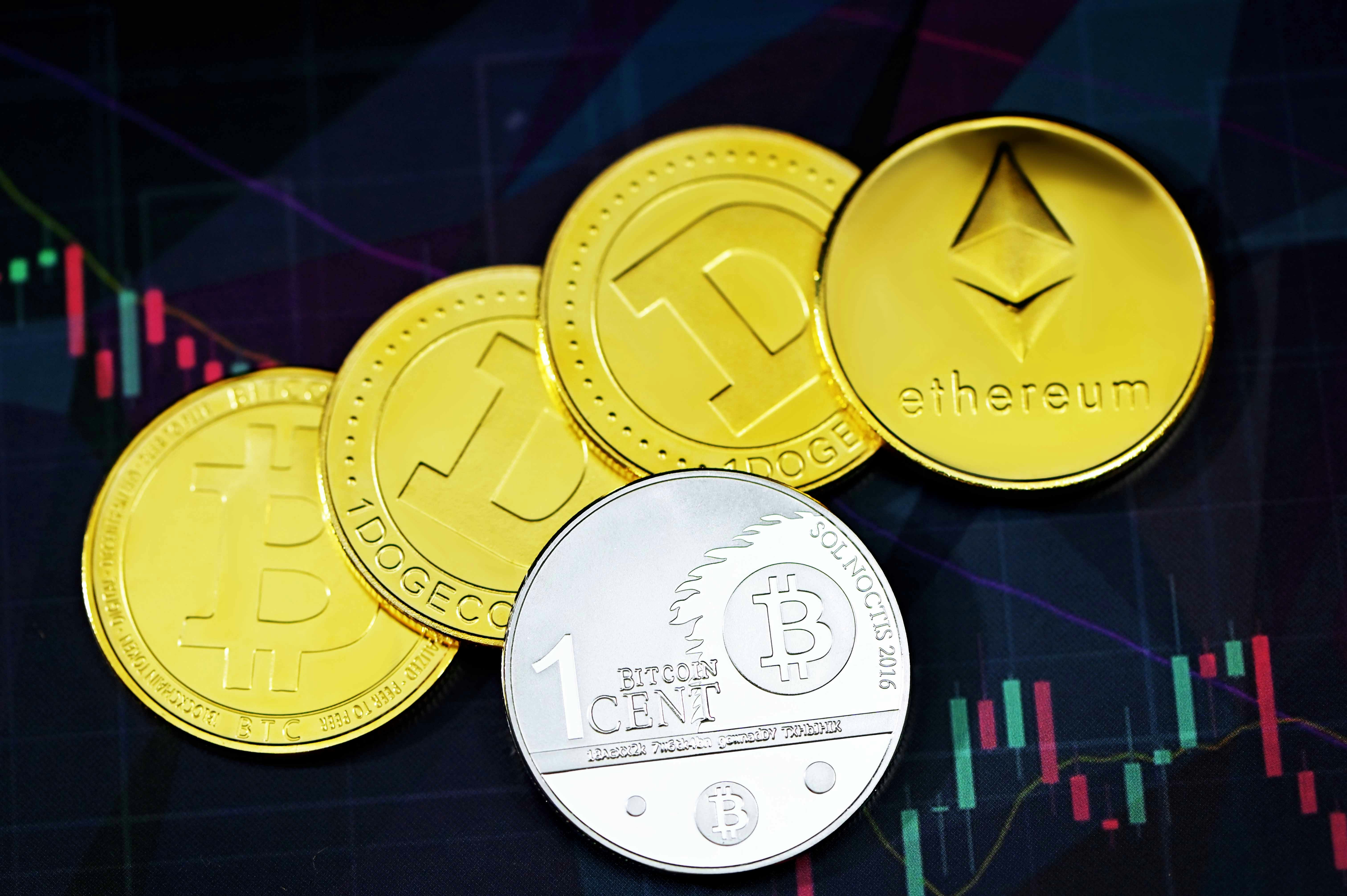
What Is Crypto Mining?
Understanding Crypto Mining: A Comprehensive Guide
Crypto mining refers to the process by which transactions involving cryptocurrencies are verified and recorded in a blockchain. This crucial activity is carried out by individuals known as miners, who use powerful computers to solve complex mathematical problems that validate new transactions. When a miner successfully solves a problem, they add a block of transactions to the blockchain, making these transactions a permanent part of the cryptocurrency’s public ledger. In return for their resource-intensive efforts, miners are rewarded with newly created cryptocurrency, along with transaction fees.
The role of miners extends beyond simply adding transactions to the blockchain. They help maintain the integrity and security of the cryptocurrency network. By contributing computing power, miners deter fraudulent activities such as double-spending, ensuring that each transaction is legitimate. The decentralized nature of mining means that no single entity controls the network, making cryptocurrencies resistant to censorship and manipulation.
Various cryptocurrencies utilize mining, with Bitcoin being the most well-known example. However, other prominent cryptocurrencies, such as Ethereum, Litecoin, and Monero, also employ mining as part of their transaction validation processes. Each of these cryptocurrencies has its unique algorithms and requirements for mining, attracting different types of miners based on their hardware capabilities and energy sources.
In essence, crypto mining serves as the backbone of many digital currencies, providing a necessary framework for validating transactions while simultaneously enabling the ongoing creation of new coins. Understanding crypto mining and how it works is essential for anyone interested in the cryptocurrency landscape and exploring its diverse applications within the digital economy.
The History of Crypto Mining
Crypto mining, as a process, began with the launch of Bitcoin in January 2009. The pioneering cryptocurrency introduced a decentralized network that allowed users to validate transactions and secure the blockchain in exchange for rewards. Initially, Bitcoin mining was performed using standard Central Processing Units (CPUs). This method was accessible to anyone with a personal computer, making it an inviting entry point for individuals interested in what crypto mining is and how it works. During this period, the difficulty level was relatively low, enabling miners to successfully mine new blocks without significant investment in technology.
As the popularity of Bitcoin grew, so did the complexity of mining. The original proof-of-work algorithm became more challenging, requiring miners to employ more powerful hardware to remain competitive. Consequently, miners transitioned from CPU mining to Graphics Processing Unit (GPU) mining around 2010. GPUs, designed for rendering graphics in video games, offered significantly higher processing power. This shift marked a critical milestone in the evolution of mining technologies, as it allowed users to mine cryptocurrencies more efficiently and quickly.
By 2013, the introduction of Application-Specific Integrated Circuits (ASICs) revolutionized the landscape once again. ASICs are custom-built hardware designed specifically for mining cryptocurrencies, allowing for unmatched power and efficiency. This advancement brought about a substantial increase in hashing power, thus changing the economics of mining further by favoring those who could afford specialized hardware. Although the entry barriers rose, this transition helped solidify the role of mining in maintaining the security and integrity of blockchain networks.
Over the years, these advancements in crypto mining methodologies have led to innovations aimed at improving energy efficiency and sustainability. As the landscape continues to develop, understanding the history of crypto mining provides insight into its transformative journey and the continual technology shifts that shape its future.
How Does Crypto Mining Work?
Crypto mining is an essential process that enables the functioning of various cryptocurrencies, such as Bitcoin. At its core, it involves miners validating transactions and securing the network by solving complex mathematical problems. This validation ensures that all transactions are legitimate and prevents double-spending, which is crucial for maintaining trust in the cryptocurrency ecosystem. But how exactly does this process work?
To begin with, miners utilize powerful computers equipped with specialized hardware to solve cryptographic puzzles. Each of these puzzles requires significant computational power and time, as they must produce a hash value that meets certain criteria. This is where the term “proof of work” comes into play. Proof of work signifies that a miner has indeed expended computational effort to arrive at a specific solution. The first miner who successfully solves the puzzle broadcasts their solution to the network, where it is verified by other participants.
Once verified, the miner adds the block containing the validated transactions to the blockchain—a secure and immutable ledger of all cryptocurrency transactions. As a reward for their efforts, miners receive newly minted cryptocurrency coins and sometimes transaction fees included in the block. This combination incentivizes miners to contribute their resources to the network continuously.
The concept of mining difficulty is also significant in this context. Mining difficulty adjusts periodically based on the overall computational power of the network. If more miners join the network, the difficulty of solving puzzles increases, thus ensuring that new blocks are added to the blockchain at a relatively consistent rate. Conversely, if miners leave, the difficulty decreases. This dynamic adjustment is crucial for maintaining balance within the cryptocurrency ecosystem and ensuring that the process remains decentralized and secure.
Different Types of Mining
Crypto mining is the process of validating transactions and adding them to the blockchain. There are several methods utilized in this practice, primarily classified as solo mining, pool mining, and cloud mining. Each type has unique characteristics that cater to different needs and preferences among miners.
Solo mining involves an individual miner working independently to solve cryptographic puzzles. This method requires significant computational power and resources, as the miner competes against the entire network to validate a block. The primary advantage of solo mining is that the miner keeps the entire block reward. However, the challenges lie in the high energy costs and the time it may take to solve a block, especially for less popular cryptocurrencies.
On the other hand, pool mining aggregates the resources of multiple miners in a single group to enhance the chances of successfully mining a block. By joining a mining pool, participants contribute their computing power while receiving a proportional share of the rewards based on their contribution. The key benefits of pool mining include more consistent rewards and reduced variance, making it suitable for those who prefer regular earnings over the uncertainty of solo mining. However, miners should note that pools typically charge fees, which can affect overall profitability.
Lastly, cloud mining offers an alternative approach where miners lease hardware or computational power from a remote data center. This method provides the advantage of not having to invest in expensive equipment and avoiding the complications of maintenance and electricity costs. Nevertheless, potential miners must be cautious of service providers, as some may be scams, and returns are often less predictable compared to other methods.
Each mining method presents distinct advantages and disadvantages that miners should evaluate, based on their resources, risk tolerance, and long-term goals.
Mining Hardware and Software
To embark on the journey of crypto mining, it is essential to understand the hardware and software components that facilitate the process. Crypto mining involves validating transactions and adding them to a blockchain, which requires considerable computational power. The choice of hardware significantly impacts the efficiency of this process.
One of the primary hardware components used in crypto mining is the Graphics Processing Unit (GPU). GPUs are preferred by miners due to their parallel processing capabilities, which allow for a higher hash rate when solving complex mathematical functions. These devices are particularly popular in mining cryptocurrencies that utilize algorithms, such as Ethereum, where GPUs have been historically advantageous. However, for miners focusing on currencies like Bitcoin, Application-Specific Integrated Circuits (ASICs) offer a more efficient alternative. ASIC miners are specialized equipment designed to perform a specific task at superior speeds and efficiency compared to general-purpose hardware. This specialization makes ASICs an optimal choice for crypto mining when targeting coins that use the SHA-256 algorithm.
Building a mining rig is another essential consideration for aspiring miners. A mining rig comprises multiple GPUs or ASICs connected to a motherboard, power supply unit, and cooling systems to manage heat generated during the mining process. The configuration of the rig should be tailored to balance power consumption and mining output effectively to optimize returns.
In addition to hardware, the right software tools are crucial for maximizing mining efforts. Mining clients or software enable your hardware to connect to the blockchain network, where miners compete to solve cryptographic puzzles. Options such as CGMiner, BFGMiner, and EasyMiner are widely used due to their robust features and capabilities. Wallet software is also essential for securely storing the mined cryptocurrency. By ensuring a thorough understanding of mining hardware and software, miners can better navigate what is crypto mining and how does it work, leading to improved performance and profitability.
The Economics of Crypto Mining
The economics of crypto mining is a fundamental aspect that potential miners must carefully evaluate before engaging in mining operations. Essentially, crypto mining involves validating transactions on a blockchain network, which in turn requires substantial computational power and resources. Miners are typically rewarded with cryptocurrency for their efforts, often referred to as block rewards. However, the economic model of mining is complex and necessitates a thorough understanding of both fixed and variable costs.
One of the primary expenses associated with mining is the hardware required to perform the computations efficiently. Advanced graphics processing units (GPUs) or dedicated Application-Specific Integrated Circuits (ASICs) can be both expensive and essential in achieving profitability. The initial investment in such hardware can be significant, and the rate of technological advancement means that miners frequently require upgrades to remain competitive. Another cost factor includes ongoing electricity expenses, which can vary widely based on geographic location and power rates. It is crucial to note that power consumption can be substantial in mining operations, often accounting for the largest share of operational costs.
Cooling systems also represent a crucial component of mining infrastructure. These systems are necessary to dissipate heat generated by mining rigs, which can lead to equipment failure if not adequately managed. As such, investment in reliable cooling solutions can add to the overall costs. Profitability in crypto mining is influenced by multiple factors, including the market value of the mined cryptocurrency and its block reward structure. Fluctuations in this market can drastically affect a miner’s potential income, highlighting the need for miners to stay informed about market conditions and trends.
In conclusion, while the prospects of profit in crypto mining can be appealing, careful consideration of the associated costs and market dynamics is essential for anyone looking to pursue this venture. Understanding what is crypto mining, and how it works, along with its economic implications, is vital for making informed decisions in the mining landscape.
Environmental Impact of Crypto Mining
Crypto mining, the process of validating transactions on blockchain networks, has garnered significant attention due to its environmental implications. As the demand for cryptocurrencies increases, so does the energy consumption associated with mining activities. A central concern revolves around the carbon footprint of these operations, which can often come from non-renewable energy sources, leading to high levels of greenhouse gas emissions.
Mining facilities require substantial computing power to solve complex mathematical equations. This demand translates into increased electricity usage, prompting debates regarding sustainability practices within the industry. For instance, Bitcoin mining, one of the most notable cryptocurrencies, has been criticized for its substantial energy consumption. Estimates suggest that a single Bitcoin transaction can consume the same amount of energy as the average American household uses in several weeks. Such statistics raise awareness about the urgent need for addressing the environmental challenges posed by crypto mining.
As stakeholders in the cryptocurrency landscape become more aware of these issues, there has been a push towards adopting more environmentally friendly practices. Various solutions have been proposed to mitigate the adverse environmental effects associated with crypto mining. These include transitioning to renewable energy sources such as solar, wind, and hydroelectric power. In addition, improving energy efficiency in mining processes and developing new consensus mechanisms—like Proof of Stake—may also contribute to reducing the carbon footprint associated with crypto activities.
Ultimately, while the environmental impact of crypto mining continues to spark debate, there is potential for significant improvements. By focusing on sustainability and energy efficiency, stakeholders can work together to ensure that the growth of cryptocurrencies does not come at the cost of our planet. Understanding what is crypto mining and how it works can further help in recognizing these implications and fostering dialogue on solutions to enhance sustainability within this burgeoning industry.
The Future of Crypto Mining
As the world of digital currencies continues to evolve, it is essential to consider what is crypto mining, how does it work, and where it is headed in the coming years. The current landscape of crypto mining is characterized by rapid technological advancements and emerging trends that are reshaping the mining process. One significant development is the move towards more energy-efficient mining methods, as the demand for sustainable practices grows among investors and regulators alike. This shift is prompting miners to explore newer hardware options, such as Application-Specific Integrated Circuits (ASICs), which offer improved performance while consuming less energy.
Moreover, regulatory frameworks surrounding crypto mining are becoming increasingly stringent. Governments across various regions are discussing policies that could impact mining operations, including energy consumption regulations and guidelines on the use of renewable energy sources. These regulatory updates are crucial, as they will affect not just the operational feasibility of existing mining processes, but also influence future mining investments. Miners will need to adapt to these changes, ensuring compliance while striving for profitability in a potentially constrained environment.
Another noteworthy trend is the growing interest in alternative consensus mechanisms, such as proof of stake (PoS). Unlike Bitcoin’s proof of work (PoW) model, which requires extensive computational power, PoS operates on a fundamentally different premise that reduces the need for intensive resource consumption. This evolution could result in a significant decrease in demand for traditional mining, prompting miners to reconsider their strategies. In this context, understanding what is crypto mining and how does it work will be essential for anyone involved in the cryptocurrency industry.
In conclusion, the future of crypto mining is undeniably tied to technological innovation, regulatory developments, and shifts in consensus algorithms. As these elements converge, they are likely to redefine the mining landscape, encouraging an era of more sustainable and accessible crypto practices.
Conclusion
In conclusion, understanding what is crypto mining and how it works is crucial for anyone interested in the broader world of cryptocurrency and blockchain technology. As we have explored, crypto mining is not merely a technical process; it is an essential component that underpins the entire ecosystem of cryptocurrencies. This process involves validating transactions, maintaining the integrity of the blockchain, and generating new coins, thereby incentivizing miners through rewards.
Moreover, we discussed the different methods of mining, including Proof of Work and Proof of Stake. Each method carries its own set of benefits and challenges, affecting not just the miners but also the overall sustainability of cryptocurrency networks. The implications of crypto mining extend beyond mere coin generation; they touch on significant topics such as energy consumption, environmental concerns, and the future of decentralized finance.
Understanding these elements allows investors and users alike to gauge the viability and potential of various cryptocurrencies. As the technology continues to evolve, so too does the landscape of mining. Keeping informed about developments in mining practices and tools remains an important endeavor for both seasoned investors and newcomers to the field.
The digital currency sphere is constantly changing, and ongoing research into mining technologies will play a critical role in shaping the future of blockchain and cryptocurrency markets. Ultimately, a comprehensive grasp of what is crypto mining and how it works can empower individuals to make informed decisions in this rapidly developing sector, articulating a clearer vision of a future increasingly influenced by digital currencies.















